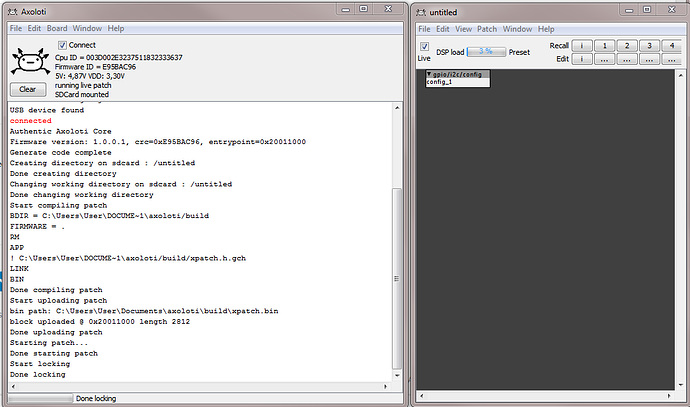So I'm using a small I2C display and I have gotten it to work before but since updating firmware it hasn't been connecting, even when using the help patch. I get these errors:
C:\Users\minus\DOCUME~1\AXOLOT~1.0/build/xpatch.cpp:135:24: error: variable 'const I2CConfig i2cfg' has initializer but incomplete type
C:\Users\minus\DOCUME~1\AXOLOT~1.0/build/xpatch.cpp:136:5: error: 'OPMODE_I2C' was not declared in this scope
C:\Users\minus\DOCUME~1\AXOLOT~1.0/build/xpatch.cpp:138:5: error: 'FAST_DUTY_CYCLE_2' was not declared in this scope
Any help would be greatly appreciated because I am not too well versed in the coding aspect of axoloti. Looking at other topics in the forum I quickly got confused with what they were talking about and if I was even experiencing the same problem.

